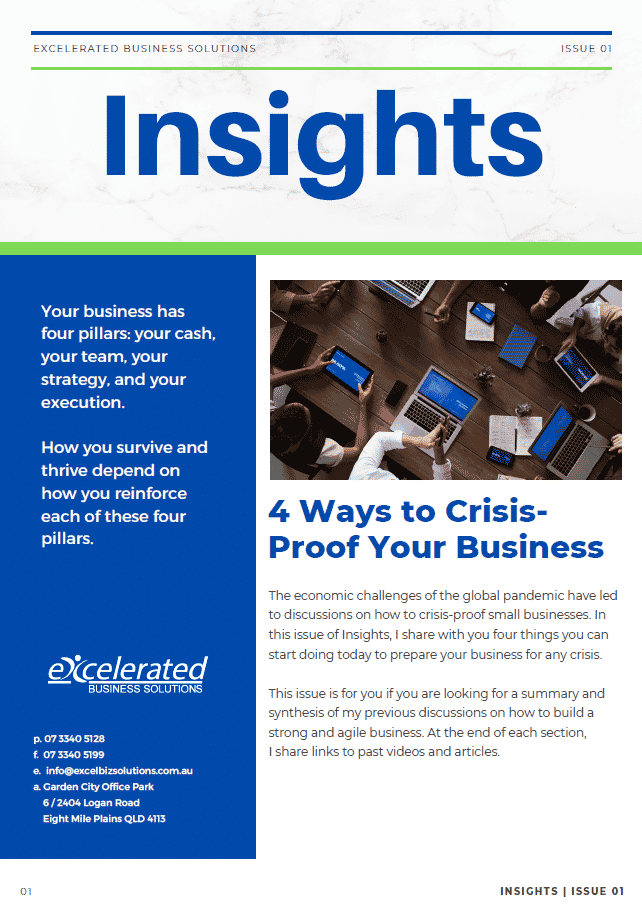The negative impact of the global pandemic is felt by businesses large and small around the world. To keep afloat, many are looking for ways to not just stay in business but also to find more business.
In this video, I explore three ways that you can start doing today to set you up for increased sales.
Covid-19 has brought economic challenges across the board, forcing many businesses to find ways to stay afloat. Some businesses have opted to do the #COVIDPivot, which I discussed in a previous video. Essentially, the #COVIDPivot entails developing a new business model, introducing a new product, or finding a new market. Doing any of those three may help you get more sales.
But what if this doesn’t apply to your business? Or, what if I’ve done that already, but it isn’t working as I had hoped it to work–what else can you do? Or how else can I supplement my other efforts so that I can bring in more sales?
Here are three things that you can start doing today, or more of today, to help you bring in higher revenue or turnover for your business.
- Reach out to your customers, or potential customers.
If you haven’t reached out to your customers since Covid-19 hit, it is best to do it now. Many businesses do this.
Talk to them about how you are doing, too. Were you affected by the crisis? How are you affected by the global pandemic? How has that affected your ability to do business? How has that affected your employees—and what are you doing to help your employees? Continue the conversation by telling your customers how you plan on moving forward—and how you would like them to move forward with you.
And once you continue with this conversation, you’ll find that you’re not only building trust between you and your customers, but you are also building and nurturing a community around your brand, just as I discuss in the video on how to build a community during the age of social distancing (link forthcoming).
- Develop your distribution channel.
Part of the reason for reaching out to your customers is understanding their pain points. One of the challenges that consumers experience during the pandemic is finding ways to purchase goods and services as a result of community quarantines and lockdowns imposed by governments to curb the spread of the coronavirus. This resulted in many businesses operating in a limited capacity, so getting goods and services to customers became a challenge.
So when you get to reach out to your customers, ask them for feedback. Would they prefer that you deliver to their doorstep, instead of buying in-store? Would they prefer that they order online instead of purchasing in-store? Do they want these changes only in the short-term, or do they want these options available to them permanently?
The global pandemic is said to affect normal as we know it—and many things, including consumer lifestyles, will change permanently. And so the immediate need is to understand how your customer’s lifestyles will change and how you can address these changes so that you can keep up with their wants and needs.
- Develop complementary or supplementary products or services.
Many businesses had to turn to digital marketing when governments ordered lockdowns and community quarantines. To supplement their limited offerings and to ensure that they can keep in touch with their customers, many of these businesses offered webinars or online training classes. Some of them were offered for free, like Single O Café, who offered short classes on their social media accounts. Some bundled these classes with their offerings.
Asian Mint, a Thai restaurant in Texas, USA, had to quickly pivot and create a new product when the state of Texas ordered the closure of dining rooms to mitigate the spread of the coronavirus. Asian Mint offered cooking kits to allow their customers to cook some of the restaurant’s favourite dishes in the comfort of their own home. Each kit contained raw ingredients and instructions on how to cook each dish. As a complement, they also offered free virtual cooking classes, which they streamed on their social media accounts, to help customers learn how to cook their kits. The restaurant also opened their pantry where their customers can source additional ingredients.
Some vineyards offer wine tasting classes. Wineries would send in bottles of their wines and a link to an online virtual class. Other wineries would partner with restaurants so that they can offer cold cuts and cheese and offer a class that discussed how to properly pair wines with dishes.
What I find very interesting during this global pandemic is how businesses are responding to the challenges that it brought about. Many business owners are creating their own disruptions and finding different ways not just to stay afloat but also get ahead of the curve.
If you are interested to know more about what a business has to go through when facing exponential growth, you can download the first chapter of the book, ”$20K to $20 Million in 2 Years” absolutely free here. The chapter talks about the differences between a good and a great business and puts out questions that make you consider how you can turn your business from good to great.



